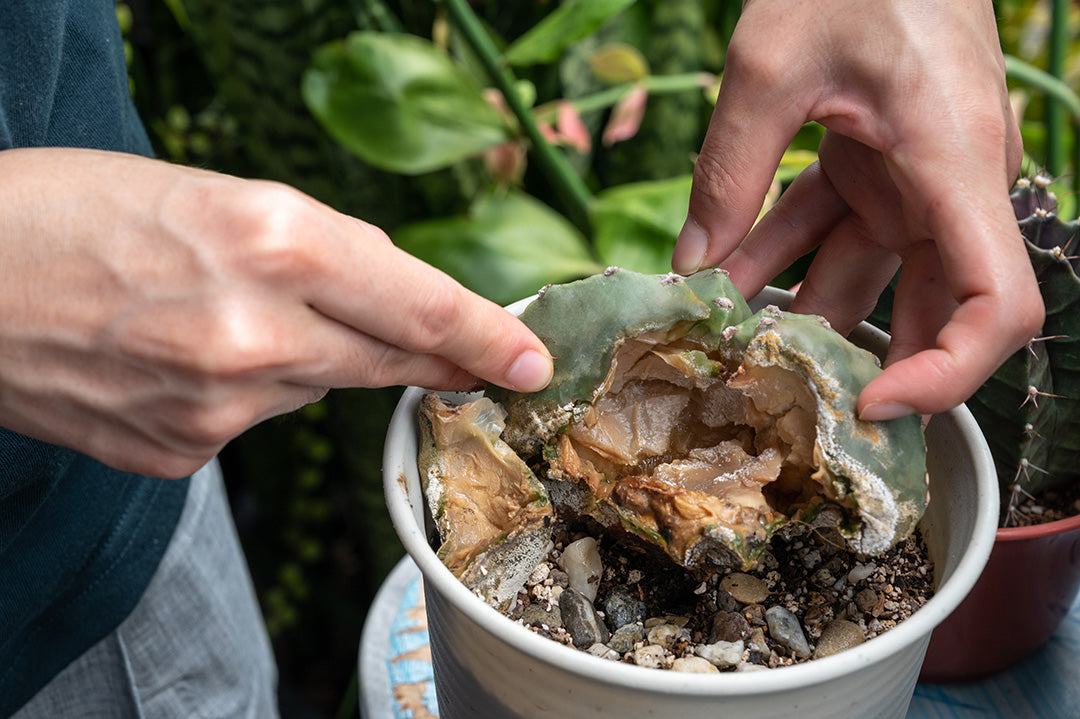Microscopic Soil Monsters
Water is a fundamental aspect of houseplants. Whether it be vegetables, trees or your ornamental plants at home, without a regular source of water, they will die. Essential, yes, but did you know water can also have a dark side!
It’s commonly known that watering your plants too often is a bad thing; causing a variety of issues. One of which, is inviting unwanted guests into your soil. Fungus gnats are a notorious pest to the houseplant community. They enjoy spending their time immersed in moist, wet and damp soil systems. Whilst these insects don’t cause specific issues to your houseplants, they’ll affect the health of your plants if their populations grow unattended.
With Halloween so close, Willow wants to share with you the true devils associated with overwatering, often referred to as root rot. As its name suggests, this is the process of your roots becoming rotten. This leaves your plants with no support and usually results in plant death. Although root rot is a standard term dreaded by plant lovers around the world, it’s actually caused by tiny deviant water mould. These tiny soil monsters are closely related to algae, and are named Phytophthora.
Where do these monsters come from?

The name Phytophthora is derived from the Greek words meaning ‘plant destroyer’. Phytophthora species cause devastating losses in a variety of ornamental and crop plant species as well as in native ecosystems.
These soil borne microscopic monsters share similar properties to fungi, and begin life as small spore like organisms called Zoospores. They swim through open water with small appendages called flagellum. Using wet soil conditions to travel and multiply, causing more decay to anything organic.
Naturally these pathogens are a result of globalisation, shared between trading nations. Originally it was believed that they formed through underground irrigation within the farming sector. But it was importation of ornamental plants not the agricultural industry.
Native water borne pathogens exist throughout the world, so don’t go blaming international trade just yet! Though some of the most destructive diseases have developed through their introduction to sensitive ecosystems. Specifically here in Australia, Phytophthora cinnamomi has done horrific damage to native Jarrah and Banksia forests. If it can take out a giant hearty Jarrah tree, there’s no wonder our tiny houseplants don’t stand a chance!

Do you have Phytophthora in your soil?
There are a few different ways of knowing whether root rot has really set in and diseased your plant. The first being its distinct smell. If you’ve ever smelt rotting roots before, you’ll know exactly what we’re talking about. Think of rotting vegetables and meat, combined with old socks. You’ll usually be able to smell it in the water collected on your drip tray after watering your plants.
Obviously if you notice a sudden decline in one of your previously healthy plants, it’s a good time to check for root rot. You’ll know that your roots are unhealthy when they are soft and squishy to the touch, and display a dark brown colour instead of healthy white roots.
What can you do to stop Phytophthora?
Unfortunately, one of the most devastating things about Phytophthora is that once spores are present in wet soil, they can live for years without a host plant! Contaminated soil needs to completely dry out for at least 4 months before using again. You can clean tools and pots using methylated spirits removing any traces of the pathogen.
This means if you have a plant displaying signs of root rot, one of the only methods for treatment is to uproot it. Clean off as much rotten roots as you can and wash thoroughly in warm water, before allowing it to dry out. Discard or clean the soil, pots and tools used for this treatment and repot your plant using fresh soil. You’ll want to keep the fresh soil on the drier side for at least a week or two. Granted this can be difficult if the plant you’re caring for needs a lot of water to drink which is why this disease can be so scary!

